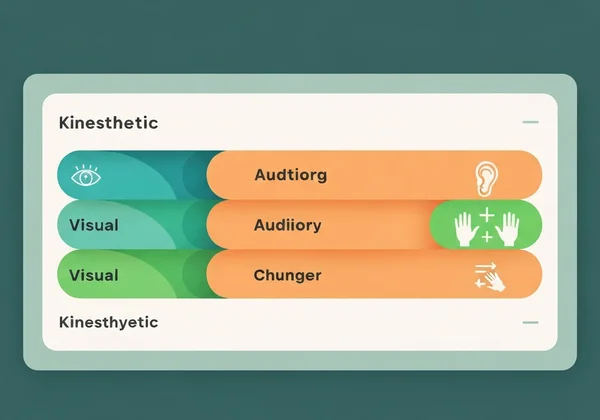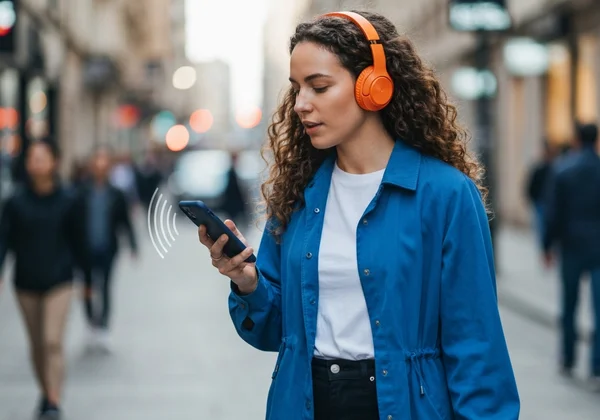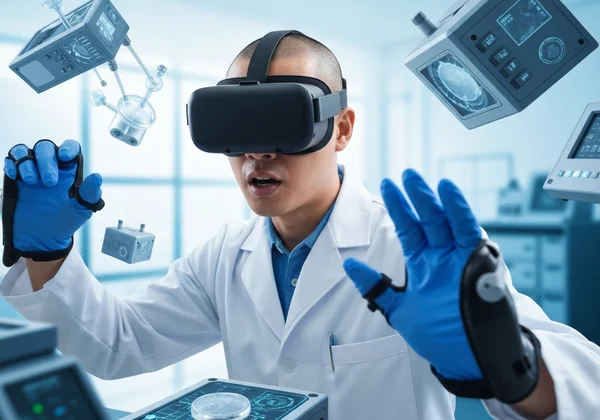Learning Style Quiz Apps: Your Ultimate Toolkit for VAK Learners
Unlock Your Learning Potential: The Power of Personalized Tech
In a world saturated with information, the one-size-fits-all approach to learning is becoming obsolete. We’ve all been there: staring at a textbook for hours with little to show for it, or getting lost in a lecture that just doesn't click. The reason isn't a lack of effort; it's often a mismatch between the teaching method and our innate learning preference. This is where understanding your unique style—Visual, Auditory, or Kinesthetic (VAK)—can be a game-changer. But what is my learning style quiz result going to be?
Answering that question is the first step toward unlocking more efficient and enjoyable learning. The second is equipping yourself with the right tools. We now have a universe of technology at our fingertips designed to cater to every cognitive preference. This guide, based on results from our learning style quiz, showcases the best apps and resources tailored specifically for VAK learners. Before you dive in, if you're unsure about your dominant style, you can discover your profile with a quick and insightful learning style quiz.

Top Tech Tools & Apps for Visual Learning Styles
Visual learners thrive when they can see information. They absorb concepts through charts, diagrams, colors, and spatial arrangements. If you're a visual learner, a fact often confirmed by a free learning style quiz, abstract text can be a barrier, but the right digital tools can transform words into a vibrant landscape of understanding. These apps are designed to help you see, map, and organize your way to success.
See It to Learn It: Mind Mapping & Diagramming Apps
For a visual learner, connecting ideas is not a linear process. Mind mapping and diagramming apps are perfect for branching out from a central concept, creating a web of interconnected thoughts. These tools allow you to use colors, images, and shapes to build a visual hierarchy of information, making complex topics easier to digest and recall.
-
Miro: An infinite digital whiteboard perfect for brainstorming, creating flowcharts, and collaborative projects.
-
XMind: A dedicated mind mapping tool with beautiful templates and a user-friendly interface for structuring your ideas.

Organize Your World: Digital Notepads & Visual Planners
Standard note-taking can feel restrictive. Digital notepads and visual planners give you the freedom to arrange your thoughts spatially. You can integrate images, checklists, and color-coded tags to create notes that are not just informative but also visually appealing and easy to navigate. This transforms studying from a chore into a creative process.
- Notion: A powerful all-in-one workspace where you can build databases, Kanban boards, and wikis, perfect for organizing complex projects visually.
- Evernote: A classic for a reason, it allows you to clip web pages, scan documents, and organize notes with a flexible tagging system.
Engaging Your Eyes: Video & Infographic Creation Tools
Why just read about a topic when you can watch it come to life? Visual learners often retain information better from videos and infographics. Furthermore, creating your own visual aids is a powerful way to solidify your understanding. These tools make it easy to consume and produce high-impact visual content.
- Canva: An incredibly user-friendly platform for designing everything from presentations and infographics to short educational videos.
- YouTube Learning: A vast, free library of documentaries, tutorials, and visual explanations on nearly any subject imaginable.
Essential Auditory Aids for Auditory Learning Styles
Auditory learners excel when they can hear information. Lectures, discussions, and audio recordings are their strong suit. The quiet act of reading can sometimes be less effective than listening to a concept being explained aloud. These auditory study aids are perfect for those whose learning style quiz results point to an auditory preference, turning your commute, workout, or downtime into valuable learning opportunities.
Hear It to Know It: Podcast & Audiobook Platforms
The rise of podcasting and audiobooks has been a revolution for auditory learners. These platforms provide access to a world of knowledge that can be absorbed while multitasking. From expert interviews and historical deep dives to entire university courses, you can learn anything without ever opening a book. To get started, you can take a visual auditory kinesthetic test to confirm your preference.
-
Audible: The world's largest library of audiobooks, covering every genre and subject.
-
Spotify & Apple Podcasts: Home to millions of free podcasts, offering expert insights on topics from coding to philosophy.

Capture Every Word: Voice Recording & Transcription Tools
Ever wish you could replay a crucial part of a lecture or meeting? With voice recording and transcription tools, you can. Auditory learners can record important discussions and listen to them later to reinforce key points. Some apps even transcribe speech to text, providing a searchable document that combines both auditory and visual reinforcement.
- Otter.ai: A fantastic tool that provides real-time transcription of spoken words, perfect for students and professionals.
- Voice Memos (iOS) / Easy Voice Recorder (Android): Simple yet powerful native apps for quickly capturing audio notes and lectures.
Interactive Sounds: Language Learning & Audio Feedback Apps
Learning a new language or mastering musical pitch relies heavily on listening and repetition. Language learning apps are a prime example of interactive auditory tech. They use spoken phrases, phonetic breakdowns, and voice recognition to create an immersive audio environment that accelerates learning through sound.
- Duolingo: A gamified language-learning app that heavily features listening and speaking exercises.
- Babbel: Focuses on conversational learning with lessons built around real-life dialogues you can listen to and participate in.
Dynamic Kinesthetic Tech for Active Learning Styles
Kinesthetic learners are the "doers." They learn best through movement, hands-on experience, and physical engagement. If your learning style quiz identified you as a 'doer,' this section is for you. The best kinesthetic tech gets you out of your chair and into the action, allowing you to touch, build, and interact with the concepts you're trying to master.
Learn by Doing: Interactive Simulations & Virtual Reality
What if you could conduct a chemistry experiment without a lab or explore ancient Rome from your living room? Interactive simulations and virtual reality (VR) make this possible. These technologies provide immersive, hands-on environments where kinesthetic learners can learn by doing in a safe and engaging way. Before exploring these advanced tools, take our free quiz to see where you stand.
-
Labster: Offers virtual laboratory simulations for science students, allowing them to perform experiments and learn through trial and error.
-
Google Earth VR: An incredible tool for exploring geography, history, and culture in a fully immersive, interactive way.

Movement for Mastery: Physical Fidgets & Ergonomic Study Tools
For many kinesthetic learners, the need to move is constant. Instead of fighting it, embrace it. Technology can extend to physical tools that aid focus. Ergonomic keyboards, standing desks, or even simple fidget tools can help channel physical energy into productive concentration rather than distraction, making long study sessions more manageable.
Hands-On Projects: DIY & Building-Focused Apps
The ultimate way for a kinesthetic learner to understand something is to build it. DIY and building apps provide guided projects that teach practical skills through application. Whether you're learning to code by building a website, mastering engineering principles with 3D modeling, or learning to cook, these platforms are built for active engagement.
- Skillshare: Offers thousands of project-based classes where you learn by creating something tangible.
- Tinkercad: A free, easy-to-use app for 3D design, electronics, and coding, perfect for hands-on creation.
Maximize Your Efficiency: Best Learning Resources for All Styles
While tailoring tools to your dominant style is crucial, some apps are universally beneficial. These best learning resources help with the foundational aspects of learning—organization, planning, and collaboration—that every student, parent, and professional needs to succeed.
Smart Planning: Cross-Platform Organization & Calendar Apps
No matter how you learn, effective organization and planning are non-negotiable. Digital calendars and task managers help you stay on top of deadlines, break down large projects into manageable steps, and build consistent study habits.
- Google Calendar: A simple, powerful, and universally integrated calendar for scheduling your life.
- Todoist: A task manager that helps you capture and organize tasks, set reminders, and track your progress.
Collaborative Learning: Group Study & Project Management Tools
Learning doesn't happen in a vacuum. Collaborative learning tools are essential for group projects and study sessions. They allow teams to communicate effectively, share resources, and manage tasks, ensuring everyone stays on the same page regardless of their individual learning style.
-
Trello: A visual project management tool that uses boards, lists, and cards to organize projects in a fun and flexible way.
-
Slack: A communication platform that streamlines group conversations, file sharing, and collaboration.

Build Your Personalized Learning Style Toolkit for Success
Understanding your learning style is like being handed a map to your own mind. It reveals the most effective paths to comprehension and retention. By pairing that self-knowledge with the right technology, you can eliminate friction, boost your efficiency, and make learning a more engaging and rewarding experience. The apps and resources in this guide are your building blocks.
Ready to revolutionize your learning? The first and most important step is to know your starting point. Discover your unique Visual, Auditory, or Kinesthetic learning style today with our free, fast, and insightful Learning Style Quiz. Once you have your results, come back to this guide and start building the ultimate tech toolkit that is perfectly tailored for your success.
Common Questions About Learning Styles, Quizzes, & Study Technology
How do I find my specific learning style preferences?
The most effective way is to take a well-designed assessment. A learning style quiz asks a series of questions about your preferences and behaviors to identify your dominant style. Our test is based on the proven VAK model and is refined with data from over 1.4 million users, giving you a reliable starting point.
What kind of learner am I, and how does it impact my tech choices?
You are likely a Visual, Auditory, or Kinesthetic learner, or a combination. A Visual learner should prioritize apps with mind maps and diagrams. An Auditory learner will benefit from podcasts and transcription tools. A Kinesthetic learner will thrive with interactive simulations and project-based apps. Knowing this directs you to the most effective tools, saving you time and frustration.
Are there free apps for visual, auditory, and kinesthetic learners?
Absolutely! Many of the powerful tools listed in this guide, such as XMind, Notion, and Tinkercad, offer robust free versions that are more than enough to get started. You don’t need a big budget to build a personalized and effective learning toolkit.
Can using specific apps really improve my study habits based on my learning style?
Yes. When your study tools align with your natural cognitive preferences, learning becomes more intuitive and less of a struggle. It reduces mental friction, improves focus, and enhances memory retention. Instead of forcing yourself to learn in a way that feels unnatural, you’re working with your brain’s strengths. To start this journey, you can try our free tool today.